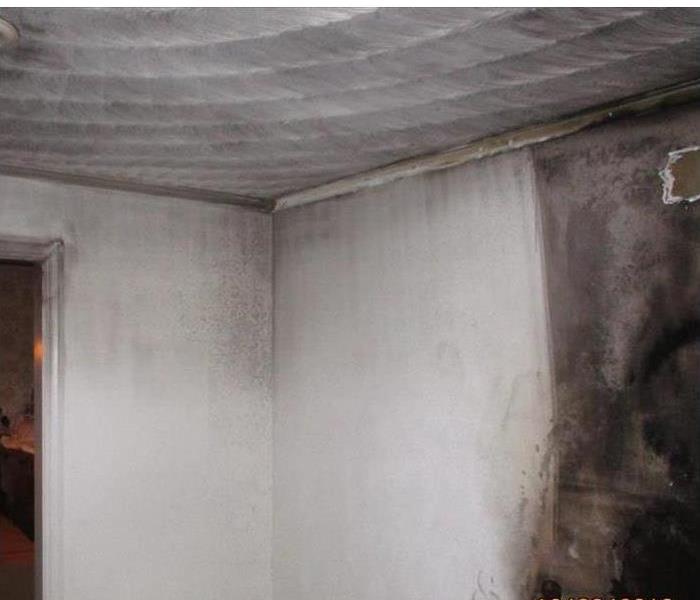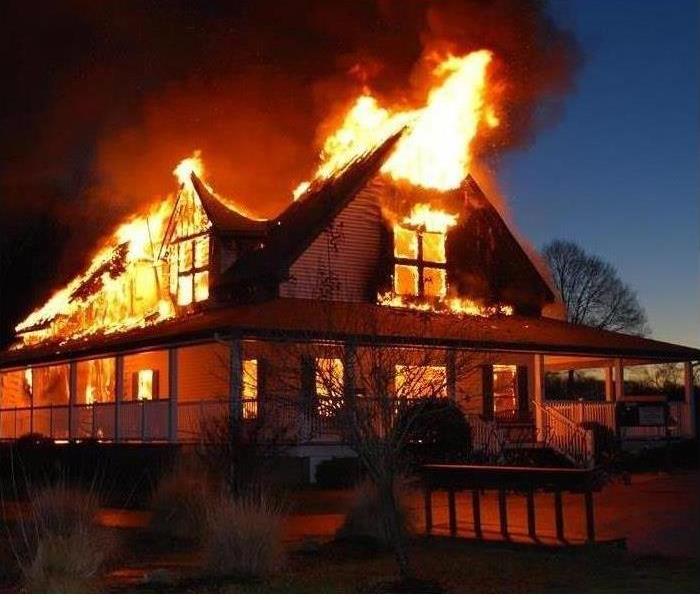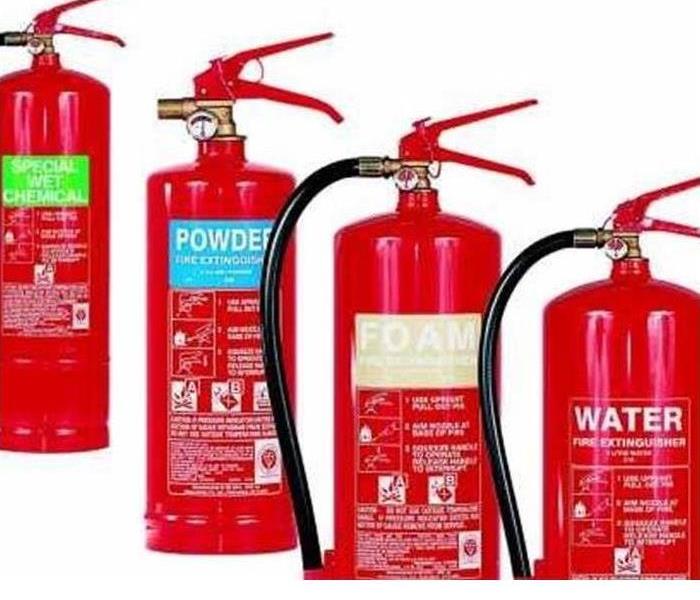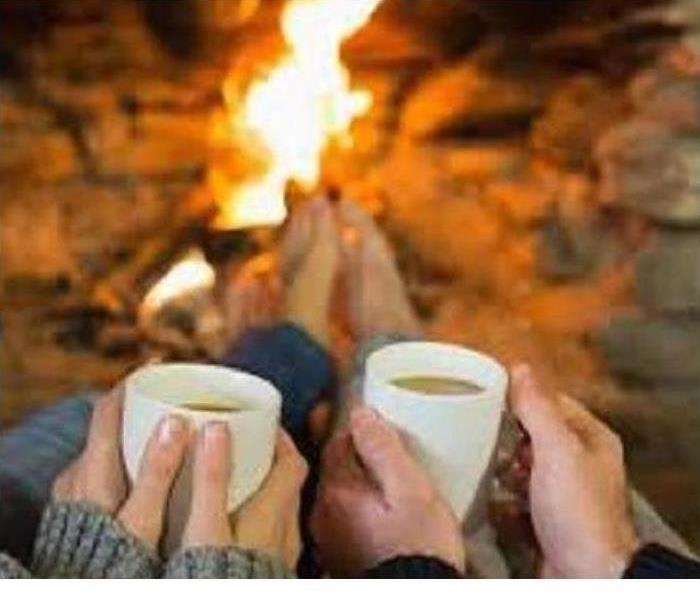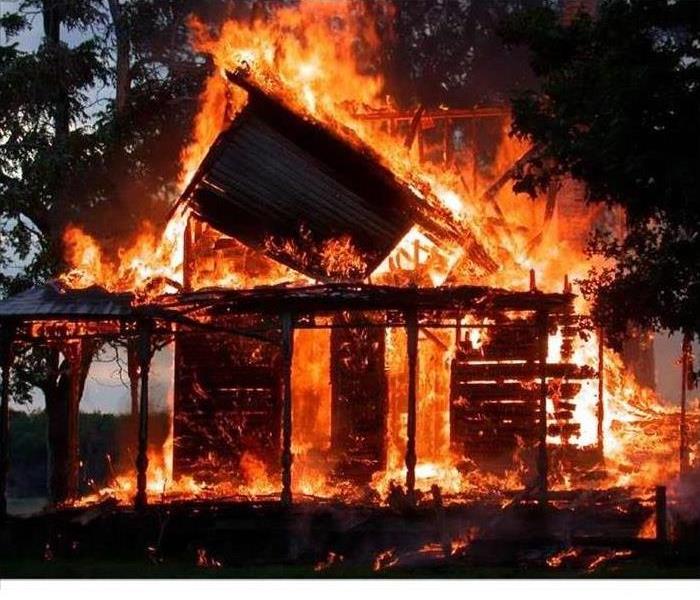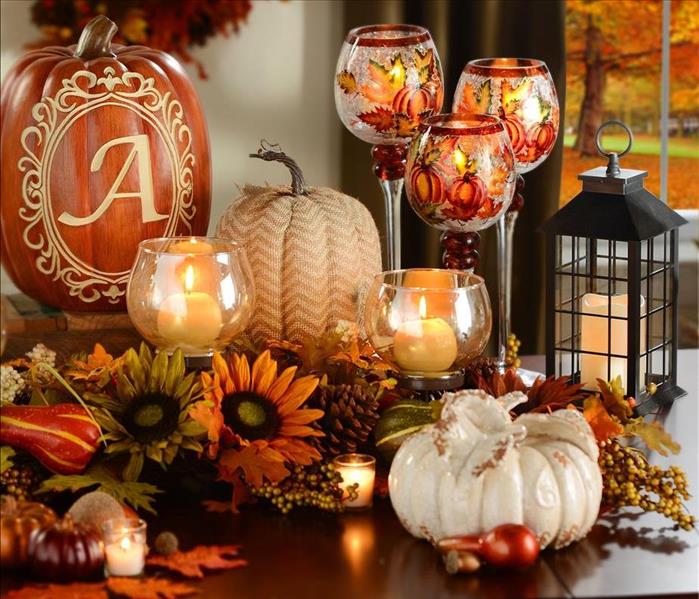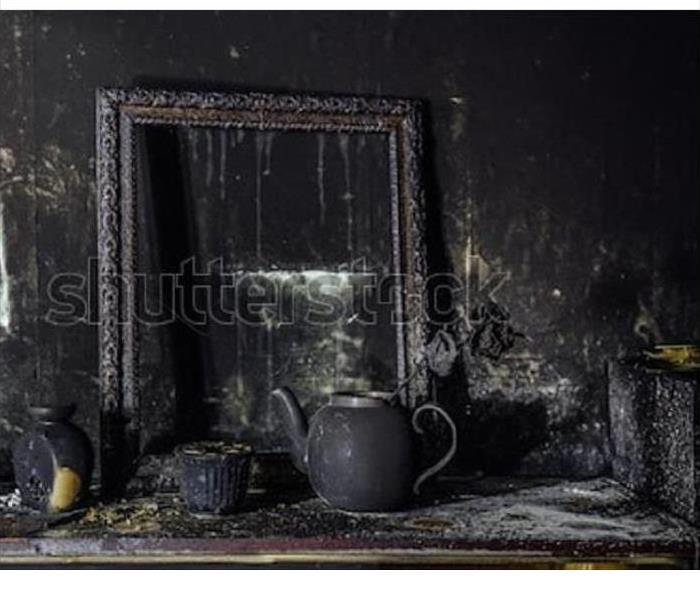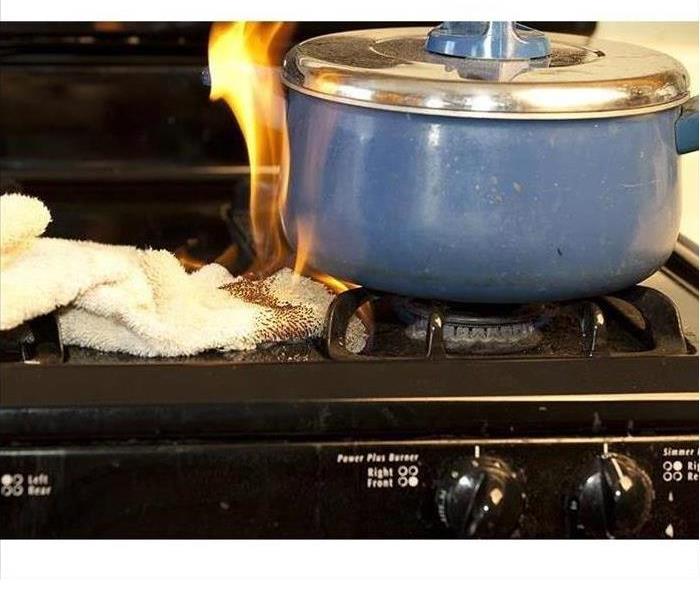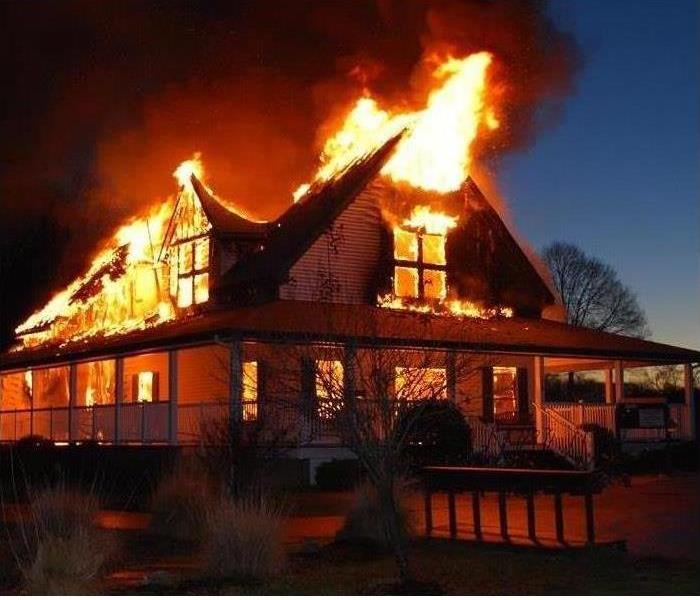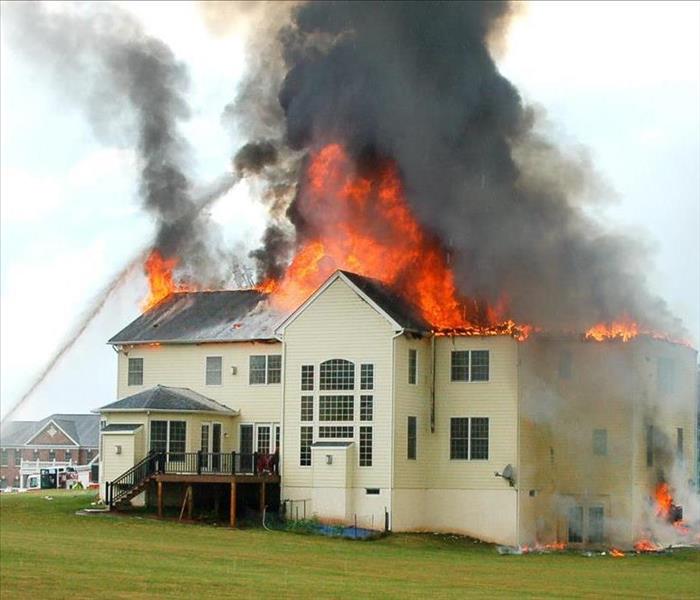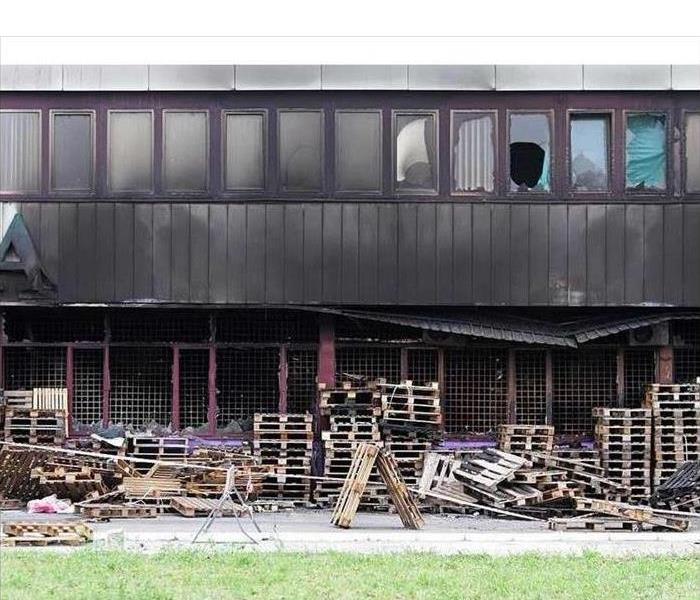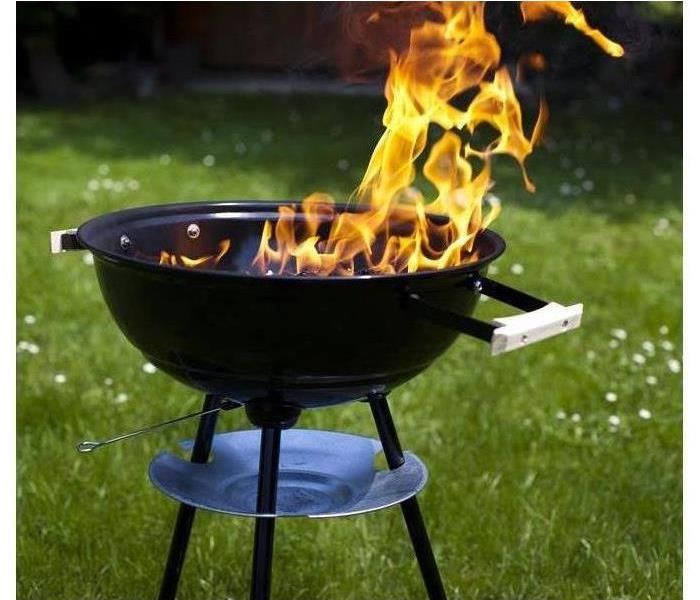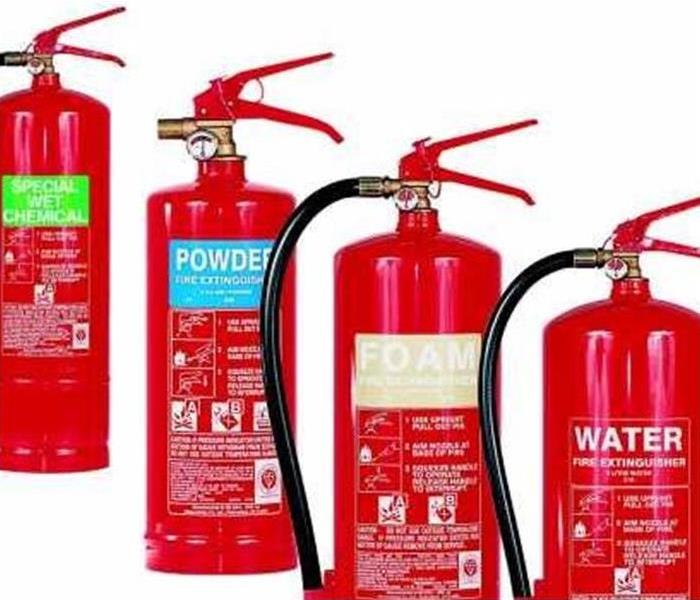Archived Fire Damage Blog Posts
Smoke & Soot Damage Facts
9/2/2022 (Permalink)
Smoke and soot are very invasive and can penetrate various cavities within your home, causing hidden damage and odor. Our smoke damage expertise and experience allow us to inspect and accurately assess the extent of the damage to develop a comprehensive plan of action.
Smoke and soot facts:
- Hot smoke migrates to cooler areas and upper levels of a structure.
- Smoke flows around plumbing systems, seeping through the holes used by pipes to go from floor to floor.
- The type of smoke may greatly affect the restoration process.
Different Types of Smoke
There are two different types of smoke–wet and dry. As a result, there are different types of soot residue after a fire. Before restoration begins, SERVPRO of Suffolk/Smithfield/Franklin will test the soot to determine which type of smoke damage occurred. The cleaning procedures will then be based on the information identified during pretesting. Here is some additional information:
Wet Smoke – Plastic and Rubber
- Low heat, smoldering, pungent odor, sticky, smeary. Smoke webs are more difficult to clean.
Dry Smoke – Paper and Wood
- Fast burning, high temperatures, heat rises, and therefore, smoke rises.
Protein Fire Residue – Produced by evaporation of material rather than from a fire
- Virtually invisible, discolors paints and varnishes, extreme pungent odor.
Our Fire Damage Restoration Services
Since each smoke and fire damage situation is a little different, each one requires a unique solution tailored for the specific conditions. We have the equipment, expertise, and experience to restore your fire and smoke damage. We will also treat your family with empathy and respect and your property with care.
Have Questions about Fire, Smoke, or Soot Damage?
Call us today - SERVPRO of Suffolk/Smithfield/Franklin at 757-934-8404.
Spring/Summer Fire Safety
4/5/2022 (Permalink)
It may not feel like it yet, but summer is quickly approaching. Each summer, families, and friends across the country enjoy the summer months with barbecues, camping trips, or cooling off in a pool or lake. In order to enjoy these occasions, it is important to keep safety top of mind to ensure you have fun in the sun.
According to the United States Fire Administration, just under 8,600 Americans are injured by fireworks, and almost 5,000 are injured by charcoal/wood-burning and propane grill fires, annually. A barbecue grill should always be supervised when in use. Keep children and pets a safe distance from the grilling area to prevent accidental burns or tipping off the grill.
If you enjoy lounging by the pool or going for a boat ride to cool off from the summer sun, make sure you exercise caution, especially when children are present. Only swim in approved areas and supervise children at all times when near the water.
Summertime should be a time to make memories and enjoy the great outdoors. The following tips, provided by the National Fire Protection Association (NFPA), will help keep you safe all summer long.
- When using a charcoal grill, only use starter fluid designed for barbecue grills; do not add fluid after coals have been lit.
- When using a gas grill, ensure the hose connection is tight; check hoses for leaks. Applying soapy water to the hoses will easily and safely reveal any leaks.
- Always wear a U.S. Coast Guard-approved PFD (personal floatation device) when boating, jet-skiing, tubing, or water-skiing. Air-filled swimming aids, like water wings or inner tubes, are not substitutes for approved PFDs. An adult should always supervise children using these devices.
- Be sure to extinguish all smoking materials and shut down motors and heating devices before fueling a boat. In case of a spill, wipe up fuel and check for fuel leakage and odors.
- When camping, always use a flame retardant tent and set up camp far away from the campfire. Only use flashlights or battery-powered lanterns inside the tent, not liquid-filled heaters or lanterns.
- Always build a campfire downwind from the tent area. Clear vegetation and dig a pit before building your campfire. Always extinguish the fire before going to sleep or leaving the campsite. To extinguish, cover with dirt or pour water over the fire.
- Store liquid fire starter (not gasoline) away from your tent and campfire and only use dry kindling to freshen a campfire.
- Consider leaving firework use to trained professionals. Stay back at least 500 feet from professional fireworks displays.
If you should need any help at all, call your local SERVPRO of Suffolk/Smithfield/Franklin, at 757-934-8404.
Fire/Soot Facts
4/5/2022 (Permalink)
Smoke and soot are very invasive and can penetrate various cavities within your home, causing hidden damage and odor. Our smoke damage expertise and experience allow us to inspect and accurately assess the extent of the damage to develop a comprehensive plan of action.
Smoke and soot facts:
- Hot smoke migrates to cooler areas and upper levels of a structure.
- Smoke flows around plumbing systems, seeping through the holes used by pipes to go from floor to floor.
- The type of smoke may greatly affect the restoration process.
Different Types of Smoke
There are two different types of smoke–wet and dry. As a result, there are different types of soot residue after a fire. Before restoration begins, SERVPRO of Suffolk/Smithfield/Franklin will test the soot to determine which type of smoke damage occurred. The cleaning procedures will then be based on the information identified during pretesting. Here is some additional information:
Wet Smoke – Plastic and Rubber
- Low heat, smoldering, pungent odor, sticky, smeary. Smoke webs are more difficult to clean.
Dry Smoke – Paper and Wood
- Fast burning, high temperatures, heat rises, therefore, smoke rises.
Protein Fire Residue – Produced by evaporation of material rather than from a fire
- Virtually invisible, discolors paints and varnishes, extreme pungent odor.
What's that Smell?
4/1/2022 (Permalink)
As various materials burn, the smoke produced travels throughout the structure, leaving odorous residues and deposits on surfaces and in hard-to-reach places. Unless fast, professional action is taken, these residues and deposits can cause permanent damage to contents and may result in periodically resurfacing odors.
From top to bottom...
SERVPRO of Suffolk/Smithfield/Franklin provides specialized services that rid your home or business of offensive odors left by fire or smoke damage. Any restorable item in affected areas will be professionally cleaned and deodorized, including furniture, draperies and upholstery, electronics, art, flooring, walls, ceilings, HVAC air ducts, and more.
Search and Destroy...
SERVPRO of Suffolk/Smithfield/Franklin professionals do NOT cover up lingering odors with a fragrance, they seek out and remove the sources of the odor. Ask us to explain the various deodorization methods available and which will work best for you.
If you or a customer suffer fire damage -- or some other accident -- and require deodorization services, contact SERVPRO of Suffolk/Smithfield/Franklin. Whether it's fire, water, mold damage -- or just a stubborn odor that refuses to go away -- we'll help make it "Like it never even happened."
Call SERVPRO of Suffolk/Smithfield/Franklin Today, 757-934-8404.
Choosing the Correct Fire Extinguisher
3/1/2022 (Permalink)
Here's are some tips for choosing the appropriate Fire Extinguisher:
Class A:
This is the most common extinguisher and can be used to put out fires in ordinary combustibles such as cloth, wood, rubber, paper, and many plastics.
Class B:
Used on fires involving flammable liquids such as grease, gasoline, and oil.
Class C:
Designed for fires involving appliances, tools, or other equipment electrically energized or plugged in.
Class D:
For use on flammable metals; often specific for the type of metal in question. These are typically found only in factories working with these metals.
Class K:
Intended for use on fires that involve vegetable oils, animal oils, or fats in cooking appliances. These extinguishers are generally found in commercial kitchens but are becoming more popular in the residential market for use in kitchens.
SERVPRO of Suffolk/Smithfield/Franklin is taking to the streets, every hour of every day, proving that whenever there is a house full of water or an office full of smoke, there is a van full of clean! It's always best to call our office directly!
757-934-8404
Furnace & Fireplace Puff Back Facts
3/1/2022 (Permalink)
What is a Furnace or Fireplace Puffback?
Laughing at someone in a movie whose face has just been engulfed with black soot after standing in front of a fireplace is one thing, but in the real world when you hear that distinctive loud wuff sound, it turns into something else altogether, not so funny. When your fireplace or furnace creates a puff of soot inside of your home, often called a puff back, suddenly you have a real sooty problem that needs to be handled quickly.
When a puff back happens, soot and oil residue can literally cover every surface that it can reach. Puff backs normally happen around this time of year when furnaces and fireplaces are fired up, no pun intended, after being dormant all summer.
In a furnace, a puff back is usually caused by a buildup of excess fuel, oil, even dirt or dust in the ignition chamber. The buildup prevents oxygen from reaching the combustion chamber. When the ignition flame in the furnace pulls in the rush of oxygen it needs to ignite, the result is a powerful explosion of soot and oil that can even come out of the wall or floor vents.
In a fireplace or woodstove puff back, the cause can be like the furnace, however, the cause is most likely a problem in the chimney. There is usually a buildup of ash and leftover residue clumped in the chimney that creates an uneven airflow of oxygen and carbon dioxide. The kindling and wood have plenty of fuel, but the oxygen it needs to burn is stuck above the chimney blockage. The fire will eventually correct the imbalance by sucking in a large amount of oxygen all at once, igniting the excess fuel in the fireplace and the buildup in the chimney all at once. The force of the ignition pushes ash and soot out of the fireplace.
Puff backs can usually be prevented by completing routine chimney and furnace maintenance. If you experience soot or smoke damage to your home, call SERVPRO of Suffolk/Smithfield/Franklin, 757-934-8404.
Cool Temps, Potential Rising Fires
9/16/2021 (Permalink)
There is a chill in the air, beautiful colors outside, football on the TV, and an abundance of decorations to be put up. With everything going on in the fall, it is easy to forget that autumn can be a dangerous time for fires. It is very important to be prepared and aware of your surroundings.
As you start to put up the decorations for Halloween and Thanksgiving, remember that dried flowers, cornstalks, and bales of straw are all highly flammable. Pair this with the candle-lit Jack-O-Lanterns along with other open flames and there is a recipe for disaster. It is very important to be careful and think about the way you decorate. Be sure to keep any flames far away from anything even remotely flammable. It is also very important to keep all exits clear of all decorations.
SERVPRO of Suffolk/Smithfield/Franklin isn’t the only one stressing fire prevention in the Fall. Each October, the National Fire Protection Association observes Fire Prevention Week. It is a week designated to encourage people to evaluate their surroundings and make sure that they have a plan in place in the event of a fire. It’s a great time for schools and families to teach children about fire safety.
Even if you don’t have children, take some time this month to make sure you have a plan in place. Make sure you have up-to-date fire extinguishers at the ready and fresh batteries in your smoke detectors. Always remember, no one ever expects a fire to happen. A good plan and fast action can turn a total loss into a small claim.
Call SERVPRO of Suffolk/Smithfield/Franklin with any fire-related needs, we are here 24/7, 365 days a year, 757-934-8404.
Smoke & Soot Damage Facts
3/17/2021 (Permalink)
Smoke and soot are very invasive and can penetrate various cavities within your home, causing hidden damage and odor. Our smoke damage expertise and experience allow us to inspect and accurately assess the extent of the damage to develop a comprehensive plan of action.
Smoke and soot facts:
- Hot smoke migrates to cooler areas and upper levels of a structure.
- Smoke flows around plumbing systems, seeping through the holes used by pipes to go from floor to floor.
- The type of smoke may greatly affect the restoration process.
Different Types of Smoke
There are two different types of smoke–wet and dry. As a result, there are different types of soot residue after a fire. Before restoration begins, SERVPRO of Suffolk/Smithfield/Franklin will test the soot to determine which type of smoke damage occurred. The cleaning procedures will then be based on the information identified during pretesting. Here is some additional information:
Wet Smoke – Plastic and Rubber
- Low heat, smoldering, pungent odor, sticky, smeary. Smoke webs are more difficult to clean.
Dry Smoke – Paper and Wood
- Fast burning, high temperatures, heat rises, therefore, smoke rises.
Protein Fire Residue – Produced by evaporation of material rather than from a fire
- Virtually invisible, discolors paints and varnishes, extreme pungent odor.
Our Fire Damage Restoration Services
Since each smoke and fire damage situation is a little different, each one requires a unique solution tailored for specific conditions. We have the equipment, expertise, and experience to restore your fire and smoke damage. We will also treat your family with empathy and respect and your property with care.
Have Questions about Fire, Smoke, or Soot Damage?
Call us today - SERVPRO of Suffolk/Smithfield/Franklin 757-934-8404
What is that Smell?
2/15/2021 (Permalink)
As various materials burn, the smoke produced travels throughout the structure, leaving odorous residues and deposits on surfaces and in hard to reach places. Unless fast, professional action is taken, these residues and deposits can cause permanent damage to contents and may result in periodically resurfacing odors.
From top to bottom...
SERVPRO of Suffolk/Smithfield/Franklin provides specialized services that rid your home or business of offensive odors left by fire or smoke damage. Any restorable item in affected areas will be professionally cleaned and deodorized, including furniture, draperies and upholstery, electronics, art, flooring, walls, ceilings, HVAC air ducts, and more.
Search and Destroy
SERVPRO of Suffolk/Smithfield/Franklin professionals do NOT cover up lingering odors with a fragrance, they seek out and remove the sources of the odor. Ask us to explain the various deodorization methods available and which will work best for you.
If you or a customer suffer fire damage -- or some other accident -- and require deodorization services, contact SERVPRO of Suffolk/Smithfield/Franklin, 757-934-8404. Whether it's fire, water or mold damage -- or just a stubborn odor that refuses to go away -- we'll help make it "Like it never even happened."
Picking the correct fire extinguisher
2/15/2021 (Permalink)
Here's are some tips for choosing the appropriate Fire Extinguisher:
Class A:
This is the most common extinguisher and can be used to put out fires in ordinary combustibles such as cloth, wood, rubber, paper, and many plastics.
Class B:
Used on fires involving flammable liquids such as grease, gasoline, and oil.
Class C:
Designed for fires involving appliances, tools, or other equipment electrically energized or plugged in.
Class D:
For use on flammable metals; often specific for the type of metal in question. These are typically found only in factories working with these metals.
Class K:
Intended for use on fires that involve vegetable oils, animal oils, or fats in cooking appliances. These extinguishers are generally found in commercial kitchens but are becoming more popular in the residential market for use in kitchens.
SERVPRO of Suffolk/Smithfield/Franklin is taking to the streets, every hour of every day, proving that whenever there is a house full of water or an office full of smoke, there is a van full of clean! It's always best to call our office directly!
757-934-8404
Winter Heat Hazards
2/15/2021 (Permalink)
Winter is the same anywhere you go...lower temperatures & shorter days. Often times we use alternative heat sources like fireplaces, portable space heaters, and wood-burning stoves to make our homes cozy. Did you know that heating equipment is a leading cause of home fire deaths?
Keep the following safety tips in mind to help reduce your risk of a heating-related fire:
- Keep anything flammable at least three feet away from heating equipment, like the furnace, fireplace, wood stove, or portable space heater. Have a three-foot "kid-free zone around open fires and space heaters.
- Make sure the fireplace has a sturdy screen to stop sparks from flying into the room. Ashes should be cool before putting them in a metal container. Keep the container a safe distance away from your home.
- Remember to turn portable heaters off when leaving the room or going to bed.
- Always use the right kind of fuel, specified by the manufacturer, for fuel-burning space heaters.
- Have heating equipment and chimneys cleaned and inspected every year by a qualified professional.
- Have a qualified professional install stationary space heating equipment, water heaters or central heating equipment according to the local codes and manufacturer's instructions.
- Test smoke alarms monthly.
Fire Recovery Tips
2/15/2021 (Permalink)
It is all too easy to think that it can't happen to you, there is no way you could be the victim of a devastating fire.
The National Fire Prevention Association (NFPA) reports that there were 365,500 home fires in the United States in 2015.
That's an average of over 30,000 fires per month. These fires resulted in over 2,000 deaths, 11,000 injuries, and over $7 billion in damage.
If you have suffered the unthinkable, here are some tips to help you put the pieces back together.
Get Medical Treatment - Getting everyone out of the house during a fire or other emergency can be a harrowing experience. During your evacuation, you may suffer injuries.
No matter how minor your injuries may seem, be sure to have them checked. This will help reduce any chances of infection.
Get Emotional Help - This is something that is equally as important as the physical healing you may need. A disaster such as a fire can affect people differently.
Some of the emotions you and your family may experience include fear, shock, disbelief, grief, anger, guilt, anxiety, and/or depression.
Remember, children also process traumatic events differently than adults, so be prepared to provide them with additional support if necessary. Your local Red Cross can help find you the help you need.
Rebuilding Your Home - It is extremely important to never enter your home after a disaster until inspectors have determined that it is safe to do so.
Get in touch with your insurance agent to help determine the extent of the damage and get a claim open immediately so you can begin to put the wheels in motion for rebuilding or replacing your home.
Finding Professional Contractors - No matter what repairs are needed for your home, always be sure to use reputable contractors to complete the work. Any contractors you choose should have extensive experience repairing homes after a fire or disaster.
Your local chamber of commerce is a good place to start locating the professionals best suited for your needs.
If you have suffered a fire in your home, the professionals at SERVPRO of Suffolk/Smithfield/Franklin are only a phone call away. We will jump into action immediately to help you and your family back on track. 757-934-8404
Cool Temps, Potential Rising Fires
9/8/2020 (Permalink)
There is a chill in the air, beautiful colors outside, football on the TV, and an abundance of decorations to be put up. With everything going on in the fall, it is easy to forget that autumn can be a dangerous time for fires. It is very important to be prepared and aware of your surroundings.
As you start to put up the decorations for Halloween and Thanksgiving, remember that dried flowers, cornstalks, and bales of straw are all highly flammable. Pair this with the candle-lit Jack-O-Lanterns along with other open flames and there is a recipe for disaster. It is very important to be careful and think about the way you decorate. Be sure to keep any flames far away from anything even remotely flammable. It is also very important to keep all exits clear of all decorations.
SERVPRO of Suffolk/Smithfield/Franklin isn’t the only one stressing fire prevention in the Fall. Each October, the National Fire Protection Association observes Fire Prevention Week. It is a week designated to encourage people to evaluate their surroundings and make sure that they have a plan in place in the event of a fire. It’s a great time for schools and families to teach children about fire safety.
Even if you don’t have children, take some time this month to make sure you have a plan in place. Make sure you have up to date fire extinguishers at the ready and fresh batteries in your smoke detectors. Always remember, no one ever expects a fire to happen. A good plan and fast action can turn a total loss into a small claim.
Call SERVPRO of Suffolk/Smithfield/Franklin with any fire-related needs, we are here 24/7, 365 days a year, 757-934-8404.
Fire Tips After the Damage is Done
2/27/2020 (Permalink)
These tips will assist you in taking proper actions until we arrive at a scene of a fire. Follow these DOs and DON'Ts to help reduce damage and increase the chances of a successful restoration:
DO:
- Limit movement in the home to prevent soot particles from being embedded into the carpet and avoid tracking
- Keep hands clean. Soot on hands can further soil upholstery, walls, and woodwork
- If electricity is off, empty freezer and refrigerator completely and prop doors open to help prevent odor
- Wipe soot from metal kitchen and bathroom faucets, trim, and appliances.
- If heat is off during winter, pour RV antifreeze in sinks, toilet bowls, holding tanks, and tubs to avoid freezing pipes and fixtures
- Tape double layers of cheesecloth over air registers to stop particles of soot from getting in or out of the HVAC system
DON'T:
- Don't attempt to wash any walls or painted surfaces without contacting SERVPRO first
- Don't attempt to clean any electrical appliances that may have been close to fire, heat, or water without first consulting an authorized repair service
- Don't turn on ceiling fixtures if the ceiling is wet. The wiring may be wet or damaged and cause electrical shock, and air movement may create secondary damage
Pick the Correct Fire Extinguisher!
2/4/2020 (Permalink)
Here's are some tips for choosing the appropriate Fire Extinguisher:
Class A:
This is the most common extinguisher and can be used to put out fires in ordinary combustibles such as cloth, wood, rubber, paper, and many plastics.
Class B:
Used on fires involving flammable liquids such as grease, gasoline, and oil.
Class C:
Designed for fires involving appliances, tools or other equipment electrically energized or plugged in.
Class D:
For use on flammable metals; often specific for the type of metal in question. These are typically found only in factories working with these metals.
Class K:
Intended for use on fires that involve vegetable oils, animal oils or fats in cooking appliances. These extinguishers are generally found in commercial kitchens but are becoming more popular in the residential market for use in kitchens.
SERVPRO of Suffolk/Smithfield/Franklin is taking to the streets, every hour of every day, proving that whenever there is a house full of water or an office full of smoke, there is a van full of clean! It's always best to call our office directly!
757-934-8404
Winter Heat Hazards
2/4/2020 (Permalink)
Winter is the same anywhere you go...lower temperatures & shorter days. Often times we use alternative heat sources like fireplaces, portable space heaters, and wood-burning stoves to make our homes cozy. Did you know that heating equipment is a leading cause of home fire deaths?
Keep the following safety tips in mind to help reduce your risk of a heating-related fire:
- Keep anything flammable at least three feet away from heating equipment, like the furnace, fireplace, wood stove, or a portable space heater. Have a three-foot "kid-free zone around open fires and space heaters.
- Make sure the fireplace has a sturdy screen to stop sparks from flying into the room. Ashes should be cool before putting them in a metal container. Keep the container a safe distance away from your home.
- Remember to turn portable heaters off when leaving the room or going to bed.
- Always use the right kind of fuel, specified by the manufacturer, for fuel-burning space heaters.
- Have heating equipment and chimneys cleaned and inspected every year by a qualified professional.
- Have a qualified professional install stationary space heating equipment, water heaters or central heating equipment according to the local codes and manufacturer's instructions.
- Test smoke alarms monthly.
Call SERVPRO of Suffolk/Smithfield/Franklin for all fire-related needs, 757-934-8404.
Tips to Recover After a Fire
2/4/2020 (Permalink)
It is all too easy to think that it can't happen to you, there is no way you could be the victim of a devastating fire.
The National Fire Prevention Association (NFPA) reports that there were 365,500 home fires in the United States in 2015.
That's an average of over 30,000 fires per month. These fires resulted in over 2,000 deaths, 11,000 injuries and over $7 billion in damage.
If you have suffered the unthinkable, here are some tips to help you put the pieces back together.
Get Medical Treatment - Getting everyone out of the house during a fire or other emergency can be a harrowing experience. During your evacuation, you may suffer injuries.
No matter how minor your injuries may seem, be sure to have them checked. This will help reduce any chances of infection.
Get Emotional Help - This is something that is equally as important as the physical healing you may need. A disaster such as a fire can affect people differently.
Some of the emotions you and your family may experience include fear, shock, disbelief, grief, anger, guilt, anxiety and/or depression.
Remember, children also process traumatic events differently than adults, so be prepared to provide them with additional support if necessary. Your local Red Cross can help find you the help you need.
Rebuilding Your Home - It is extremely important to never enter your home after a disaster until inspectors have determined that it is safe to do so.
Get in touch with your insurance agent to help determine the extent of the damage and get a claim open immediately so you can begin to put the wheels in motion for rebuilding or replacing your home.
Finding Professional Contractors - No matter what repairs are needed for your home, always be sure to use reputable contractors to complete the work. Any contractors you choose should have extensive experience repairing homes after a fire or disaster.
Your local chamber of commerce is a good place to start locating the professionals best suited for your needs.
If you have suffered a fire in your home, the professionals at SERVPRO of Suffolk/Smithfield/Franklin are only a phone call away. We will jump into action immediately to help you and your family back on track. 757-934-8404
What is that smell?
2/3/2020 (Permalink)
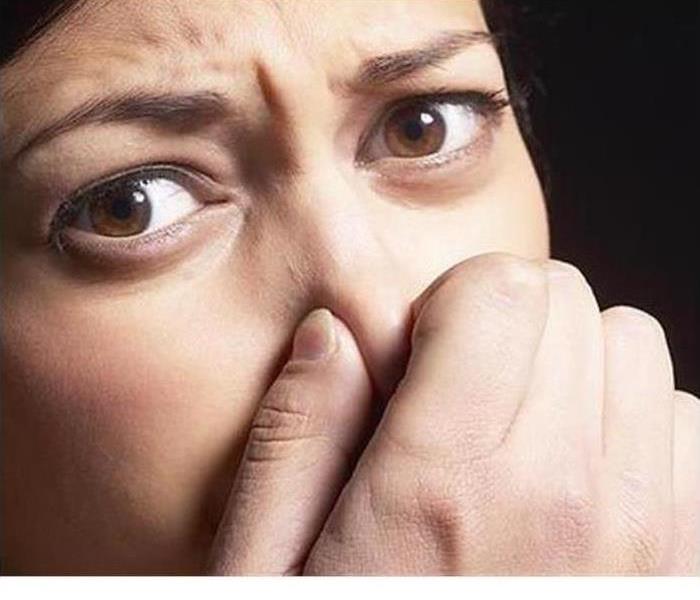
As various materials burn, the smoke produced travels throughout the structure, leaving odorous residues and deposits on surfaces and in hard to reach places. Unless fast, professional action is taken, these residues and deposits can cause permanent damage to contents and may result in periodically resurfacing odors.
From top to bottom...
SERVPRO of Suffolk/Smithfield/Franklin provides specialized services that rid your home or business of offensive odors left by fire or smoke damage. Any restorable item in affected areas will be professionally cleaned and deodorized, including furniture, draperies and upholstery, electronics, art, flooring, walls, ceilings, HVAC air ducts and more.
Search and Destroy
SERVPRO of Suffolk/Smithfield/Franklin professionals do NOT cover up lingering odors with a fragrance, they seek out and remove the sources of the odor. Ask us to explain the various deodorization methods available and which will work best for you.
If you or a customer suffer fire damage -- or some other accident -- and require deodorization services, contact SERVPRO of Suffolk/Smithfield/Franklin, 757-934-8404. Whether it's fire, water or mold damage -- or just a stubborn odor that refuses to go away -- we'll help make it "Like it never even happened."
Cool Fall Temps Can Bring an Increase Risk in Fires
9/9/2019 (Permalink)
There is a chill in the air, beautiful colors outside, football on the TV, and an abundance of decorations to be put up. With everything going on in the fall, it is easy to forget that autumn can be a dangerous time for fires. It is very important to be prepared and aware of your surroundings.
As you start to put up the decorations for Halloween and Thanksgiving, remember that dried flowers, cornstalks, and bales of straw are all highly flammable. Pair this with the candle-lit Jack-O-Lanterns along with other open flames and there is a recipe for disaster. It is very important to be careful and think about the way you decorate. Be sure to keep any flames far away from anything even remotely flammable. It is also very important to keep all exits clear of all decorations.
SERVPRO of Suffolk/Smithfield/Franklin isn’t the only one stressing fire prevention in the Fall. Each October, the National Fire Protection Association observes Fire Prevention Week. It is a week designated to encourage people to evaluate their surroundings and make sure that they have a plan in place in the event of a fire. It’s a great time for schools and families to teach children about fire safety.
Even if you don’t have children, take some time this month to make sure you have a plan in place. Make sure you have up to date fire extinguishers at the ready and fresh batteries in your smoke detectors. Always remember, no one ever expects a fire to happen. A good plan and fast action can turn a total loss into a small claim.
Call SERVPRO of Suffolk/Smithfield/Franklin with any fire-related needs, we are here 24/7, 365 days a year, 757-934-8404.
Furnace/Fireplace Puffback Facts
2/11/2019 (Permalink)
What is a Furnace or Fireplace Puffback?
Laughing at someone in a movie whose face has just been engulfed with black soot after standing in front of a fireplace is one thing, but in the real world when you hear that distinctive loud wuff sound, it turns into something else altogether, not so funny. When your fireplace or furnace creates a puff of soot inside of your home, often called a puffback, suddenly you have a real sooty problem that needs to be handled quickly.
When a puffback happens, soot and oil residue can literally cover every surface that it can reach. Puffbacks normally happen around this time of year when furnaces and fireplaces are fired up, no pun intended, after being dormant all summer.
In a furnace, a puffback is usually caused by a buildup of excess fuel, oil, even dirt or dust in the ignition chamber. The buildup prevents oxygen from reaching the combustion chamber. When the ignition flame in the furnace pulls in the rush of oxygen it needs to ignite, the result is a powerful explosion of soot and oil that can even come out of the wall or floor vents.
In a fireplace or woodstove puffback, the cause can be like the furnace, however, the cause is most likely a problem in the chimney. There is usually a buildup of ash and leftover residue clumped in the chimney that creates an uneven airflow of oxygen and carbon dioxide. The kindling and wood have plenty of fuel, but the oxygen it needs to burn is stuck above the chimney blockage. The fire will eventually correct the imbalance by sucking in a large amount of oxygen all at once, igniting the excess fuel in the fireplace and the buildup in the chimney all at once. The force of the ignition pushes ash and soot out of the fireplace.
Puffbacks can usually be prevented by routine chimney and furnace maintenance. If you experience soot or smoke call SERVPRO of Suffolk/Smithfield/Franklin, 757-934-8404.
Cooking Safety in Surprising Suffolk
2/11/2019 (Permalink)
Cooking Fire Safety
Cooking is the leading cause of home fires and home fire injuries. Travelers Insurance offers these safe cooking behaviors to help keep you and your family safe.
Never leave your cooking equipment unattended while cooking, turn it off.
Don’t wear loose clothing, roll up your sleeves.
Keep your cooking area clean and remove any items that may explode or catch fire, like a paper or kitchen towel, oven mitt, non-dairy creamer, or flour.
Remove any grease buildup from your cooking area.
Keep a fire extinguisher in the cooking area. Be sure to have the correct type of extinguisher and know how to properly use it.
Don’t throw hot grease into the garbage. Let it cool and harden then dispose of it.
Don’t store food items in your oven. People forget that there is food in there and it could catch fire when preheating.
What do you do if you do have a cooking fire?
Your safety comes first. Leave the scene if you aren’t sure if the fire is safe enough to combat, call 911 for help. The fire department will control the fire.
If the fire is small and you are going to attempt to extinguish it, call 911 for help first. The fire can get out of control quickly and having help on the way is safer.
Never throw water on a grease fire, smother it. Watch how the water will turn to burning steam and the oil will splash and spread the fire. If you can, use a mitt to carefully slide a lid onto the pan and safely turn off the heat source. Don’t attempt to remove the pan until the fire is out and the pan has had time to cool.
Keep the door closed for an oven or microwave fire and turn off the heat and electrical source. Don’t open the door until the flames are gone.
If you suffer fire damage, call SERVPRO of Suffolk/Smithfield/Franklin, 757-934-8404.
Heating Hazards in the Winter
2/1/2019 (Permalink)
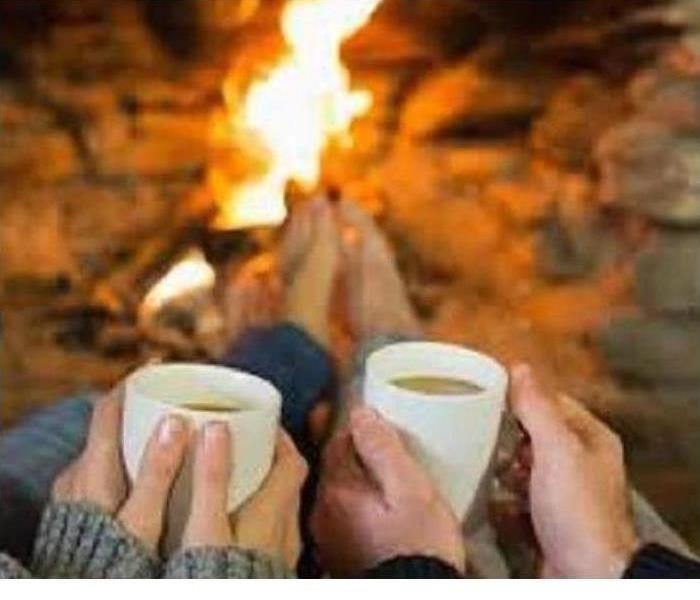 Stay safe while staying warm
Stay safe while staying warm
Winter is the same anywhere you go...lower temperatures & shorter days. Often times we use alternative heat sources like fireplaces, portable space heaters, and wood burning stoves to make our homes cozy. Did you know that heating equipment is a leading cause of home fire deaths?
Keep the following safety tips in mind to help reduce your risk of a heating-related fire:
- Keep anything flammable at least three feet away from heating equipment, like the furnace, fireplace, wood stove, or a portable space heater. Have a three foot "kid-free zone around open fires and space heaters.
- Make sure the fireplace has a sturdy screen to stop sparks from flying into the room. Ashes should be cool before putting them in a metal container. Keep the container a safe distance away from your home.
- Remember to turn portable heaters off when leaving the room or going to bed.
- Always use the right kind of fuel, specified by the manufacturer, for fuel-burning space heaters.
- Have heating equipment and chimneys cleaned and inspected every year by a qualified professional.
- Have a qualified professional install stationary space heating equipment, water heaters or central heating equipment according to the local codes and manufacturer's instructions.
- Test smoke alarms monthly.
Fire Safety in an Emergency
2/1/2019 (Permalink)
These tips will assist you in taking proper actions until we arrive at a scene of a fire. Follow these DOs and DON'Ts to help reduce damage and increase the chances of a successful restoration:
DO:
- Limit movement in the home to prevent soot particles from being embedded into the carpet and avoid tracking
- Keep hands clean. Soot on hands can further soil upholstery, walls, and woodwork
- If electricity is off, empty freezer and refrigerator completely and prop doors open to help prevent odor
- Wipe soot from metal kitchen and bathroom faucets, trim, and appliances.
- If heat is off during winter, pour RV antifreeze in sinks, toilet bowls, holding tanks, and tubs to avoid freezing pipes and fixtures
- Tape double layers of cheesecloth over air registers to stop particles of soot from getting in or out of the HVAC system
DON'T:
- Don't attempt to wash any walls or painted surfaces without contacting SERVPRO first
- Don't attempt to clean any electrical appliances that may have been close to fire, heat, or water without first consulting an authorized repair service
- Don't turn on ceiling fixtures if the ceiling is wet. Wiring may be wet or damaged and cause electrical shock, and air movement may create secondary damage
Something Smell?
2/1/2019 (Permalink)
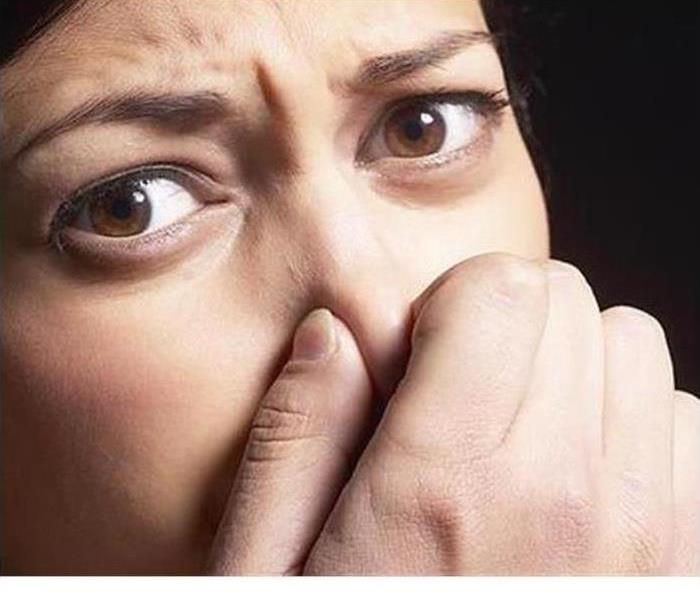
As various materials burn, the smoke produced travels throughout the structure, leaving odorous residues and deposits on surfaces and in hard to reach places. Unless fast, professional action is taken, these residues and deposits can cause permanent damage to contents and may result in periodically resurfacing odors.
From top to bottom...
SERVPRO of Suffolk/Smithfield/Franklin provides specialized services that rid your home or business of offensive odors left by fire or smoke damage. Any restorable item in affected areas will be professionally cleaned and deodorized, including furniture, draperies and upholstery, electronics, art, flooring, walls, ceilings, HVAC air ducts and more.
Search and Destroy...
SERVPRO of Suffolk/Smithfield/Franklin professionals do NOT cover up lingering odors with a fragrance, they seek out and remove the sources of the odor. Ask us to explain the various deodorization methods available and which will work best for you.
If you or a customer suffer fire damage -- or some other accident -- and require deodorization services, contact SERVPRO of Suffolk/Smithfield/Franklin. Whether it's fire, water or mold damage -- or just a stubborn odor that refuses to go away -- we'll help make it "Like it never even happened."
Call Today, 757-934-8404.
Steps To Take Immediately After a Home Fire
5/29/2018 (Permalink)
Experiencing a house fire is a scary situation. After the feeling of unbelief, people are wondering what they can do to start the cleanup process from the damage. It’s important to take the necessary steps to ensure you and your family are safe.
Get Permission Before Entering Your Property
Depending on how extensive the fire damage is, make sure the Fire Marshall tells you that the structure is safe to enter. There are possible dangers in your home such as hot spots and unsupported beams that could cause harm. You also want to be careful no one in the household uses the electricity without permission from the authorities. Although you are anxious to find out if your favorite things survived the fire, waiting until it is safe prevents you from dealing with an injury that could delay cleaning up the fire damage.
Document the Damage
It is also a good idea to take pictures that can be used for insurance purposes and to give potential companies an idea of the damage when you are seeking quotes. It’s important to note that some damage may not be visible, such as getting that smoke smell out of clothes and furniture. Remember, it’s important to keep in mind that fire creates two types of smoke damage; visible soot and an invisible odor.
Call A Professional Fire Damage Restoration Company
Although there are some things you can do on your own, such as removing items like clothing and linens that can be washed or taken to the dry cleaners. But, you should not attempt to handle items that have severe damage from the fire, smoke or water. Contacting a restoration company is the best way to handle fire damages. These companies specialize in restoring and repairing what has been damaged.
SERVPRO of Suffolk/Smithfield/Franklin is available 24/7 to help. 757-934-8404
Facts about Business Fires & Restoration
4/9/2018 (Permalink)
Know the Facts about Business Fires
According to the U.S. Small Business Administration, as many as one in four businesses that suffer some kind of major disaster do not reopen afterward. It’s true, overcoming a major loss is extremely difficult, but with the right restoration company and team on your side, working hand-in-hand with your insurance company, the chance of your Indianapolis-area company surviving is pretty high!
Depending on the size of the fire, and the amount of damage, some businesses that have come to SERVPRO for help have reopened just days after the fire happened. Thanks to innovations in smoke odor removal, fire damage restoration, and cleaning in general, it is possible for crews to start work nearly immediately after the fire department clears the scene, and have things back up and running in no time. Although, again, that all depends on the severity of the fire. But no matter the severity, recovery is possible!
According to the National Fire Prevention Association, U.S. fire departments responded to about 3,300 office property fires per year between 2007 and 2011. Those fires resulted in about $112 million in property damage each year, and most were in business offices – and happened during business hours. However, the good news is the number of business fires was down a whopping 71 percent from 1980 to 2011.
Here are some other stats from the NFPA:
Time of Day
- Peak time of day for office fires: Noon – 2 p.m. (a.k.a. lunch time!)
- 69% happened between 7 a.m. and 7 p.m.
- The 31% that occurred between 7 p.m. and 7 a.m. caused 67% of recorded property damage because they went undetected longer. This also highlights the need for automatic detection equipment and working sprinkler systems.
- 19% of fires happened on weekends.
Cause of the Business Fires
- 29% were caused by cooking equipment. However, just 6% of these fires caused actual property damage.
- Intentionally-set fires caused the most direct property damage – 21%.
- Electrical equipment is the second leading cause of office fires.
- Just 2% of office fires start in a concealed space like an attic, in the ceiling, or in another conceals space. However, these fires accounted for 13% of the direct property damage.
Containment & Putting it Out
- 4 out of 5 fires were confined to the room of origin.
- 90% of fires were large enough to activate sprinklers, which were effective 88% of the time.
- Deaths per 1,000 stores were 62% lower in offices equipped with sprinklers compared to those without.
Industrial/Manufacturing Facility Fires
The NFPA also has statistics specific to manufacturing facilities. According to their research, there are about 37,000 fires at industrial or manufacturing facilities each year, resulting in 18 deaths, 279 injuries, and $1 billion in property damage. Heating equipment and stop tools were the leading cause – sparking 28 percent of the fires. Mechanical failure or malfunction caused 24 percent of the fires.
Planning for the Worst
As part of your emergency preparation plan, be sure to have a local, reputable restoration company – like SERVPRO– on speed dial. The sooner you get the professionals in cleaning up after the disaster, the sooner you can get back to business 757-431-1400.
Summer Fire Safety
4/9/2018 (Permalink)
It may not feel like it yet, but summer is quickly approaching. Each summer, families, and friends across the country enjoy the summer months with barbecues, camping trips, or by cooling off in a pool or lake. In order to enjoy these occasions, it is important to keep safety top of mind to ensure you have fun in the sun.
According to the United States Fire administration, just under 8,600 Americans are injured by fireworks and almost 5,000 are injured by charcoal/wood burning and propane grill fires, annually. A barbecue grill should always be supervised when in use. Keep children and pets a safe distance from the grilling area to prevent accidental burns or tipping off the grill.
If you enjoy lounging by the pool or going for a boat ride to cool off from the summer sun, make sure you exercise caution, especially when children are present. Only swim in approved areas and supervise children at all times when near the water.
Summertime should be a time to make memories and enjoy the great outdoors. The following tips, provided by the National Fire Protection Association (NFPA), will help keep you safe all summer long.
- When using a charcoal grill, only use starter fluid designed for barbecue grills; do not add fluid after coals have been lit.
- When using a gas grill, ensure the hose connection is tight; check hoses for leaks. Applying soapy water to the hoses will easily and safely reveal any leaks.
- Always wear a U.S. Coast Guard-approved PFD (personal floatation device) when boating, jet-skiing, tubing or water-skiing. Air-filled swimming aids, like water wings or inner tubes, are not substitutes for approved PFD's. An adult should always supervise children using these devices.
- Be sure to extinguish all smoking materials and shut down motors and heating devices before fueling a boat. In case of a spill, wipe up fuel and check for fuel leakage and odors.
- When camping, always use a flame retardant tent and set up camp far away from the campfire. Only use flashlights or battery-powered lanterns inside the tent, not liquid-filled heaters or lanterns.
- Always build a campfire downwind from the tent area. Clear vegetation and dig a pit before building your campfire. Always extinguish the fire before going to sleep or leaving the campsite. To extinguish, cover with dirt or pour water over the fire.
- Store liquid fire starter (not gasoline) away from your tent and campfire and only use dry kindling to freshen a campfire.
- Consider leaving firework use to trained professionals. Stay back at least 500 feet from professional fireworks displays.
If you should need any help at all, call your local SERVPRO of Suffolk/Smithfield/Franklin, 757-934-8404.
What's that smell?
2/16/2018 (Permalink)
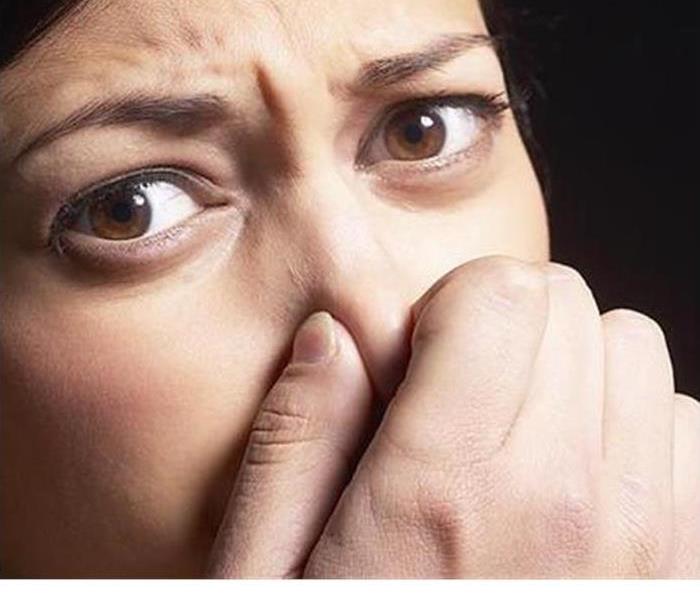
As various materials burn, the smoke produced travels throughout the structure, leaving odorous residues and deposits on surfaces and in hard to reach places. Unless fast, professional action is taken, these residues and deposits can cause permanent damage to contents and may result in periodically resurfacing odors.
From top to bottom...
SERVPRO of Virginia Beach provides specialized services that rid your home or business of offensive odors left by fire or smoke damage. Any restorable item in affected areas will be professionally cleaned and deodorized, including furniture, draperies and upholstery, electronics, art, flooring, walls, ceilings, HVAC air ducts and more.
Search and Destroy
SERVPRO of Suffolk/Smithfield/Franklin professionals do NOT cover up lingering odors with a fragrance, they seek out and remove the sources of the odor. Ask us to explain the various deodorization methods available and which will work best for you.
If you or a customer suffer a fire damage -- or some other accident -- and require deodorization services, contact SERVPRO of Suffolk/Smithfield/Franklin. Whether it's fire, water or mold damage -- or just a stubborn odor that refuses to go away -- we'll help make it "Like it never even happened."
Too Hot in the Kitchen
2/16/2018 (Permalink)
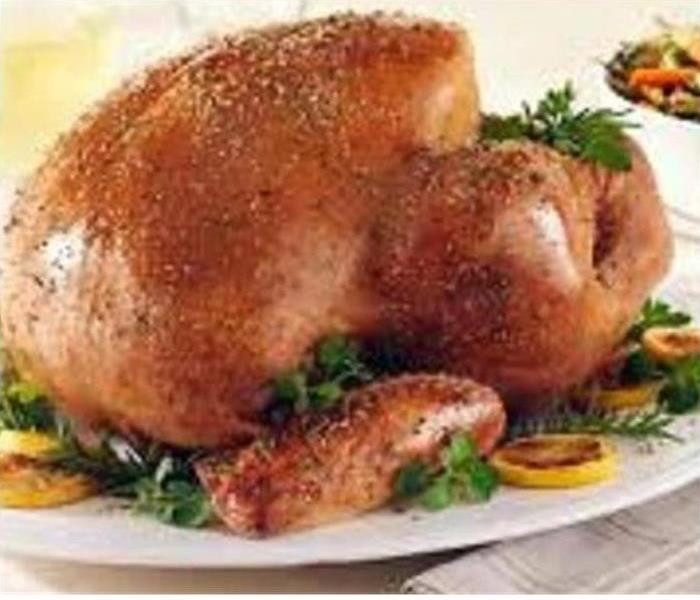
The holidays and cooking go hand in hand. But more time in the kitchen means an increased chance of cooking-related fires.
According to the National Fire Protection Association (NFPA), cooking has long been the leading cause of residential fires and fire injuries, and while Thanksgiving is the peak day for residential cooking fires, folks tend to start heading into the kitchen more and more as temperatures drop and Halloween really marks the beginning of the season for baked and fried treats.
A kitchen fire, regardless of the size, can be overwhelming. And while these fires typically begin on the stove, the damage generally affects the entire kitchen including, the walls, ceiling, air ducts, and appliances.
A cooking fire is typically ignited by food or the grease and oils used to prepare the food, making cleanup more difficult.
The professionals at SERVPRO of Suffolk/Smithfield/Franklin are trained in the cleanup and care of your home or business and contents following a fire. Proper remediation of fire, smoke, soot and water damage can help prevent further damage such as lingering odors, mold growth and permanent discoloration of items.
Before attempting to clean any smoke or
fire damage, contact SERVPRO of Suffolk/Smithfield/Franklin.
757-934-8404
How to Pick the Correct Fire Extenguisher
2/16/2018 (Permalink)
Here's are some tips for choosing the appropriate Fire Extinguisher:
Class A:
This is the most common extinguisher and can be used to put out fires in ordinary combustibles such as cloth, wood, rubber, paper and many plastics.
Class B:
Used on fires involving flammable liquids such as grease, gasoline, and oil.
Class C:
Designed for fires involving appliances, tools or other equipment electrically energized or plugged in.
Class D:
For use on flammable metals; often specific for the type of metal in question. These are typically found only in factories working with these metals.
Class K:
Intended for use on fires that involve vegetable oils, animal oils or fats in cooking appliances. These extinguishers are generally found in commercial kitchens but are becoming more popular in the residential market for use in kitchens.
SERVPRO of Suffolk/Smithfield/Franklin is taking to the streets, every hour of every day, proving that whenever there is a house full of water or an office full of smoke, there is a van full of clean! It's always best to call our office directly!
757-934-8404
Winter Heating Hazards
2/14/2018 (Permalink)
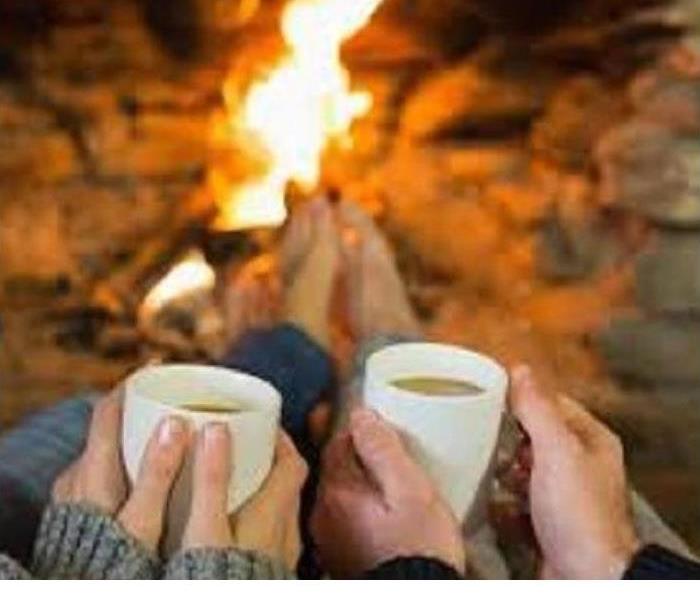 Stay safe and warm
Stay safe and warm
Winter is the same anywhere you go...lower temperatures & shorter days. Often times we use alternative heat sources like fireplaces, portable space heaters, and wood burning stoves to make our homes cozy. Did you know that heating equipment is a leading cause of home fire deaths?
Keep the following safety tips in mind to help reduce your risk of a heating-related fire:
- Keep anything flammable at least three feet away from heating equipment, like the furnace, fireplace, wood stove, or a portable space heater. Have a three foot "kid-free zone around open fires and space heaters.
- Make sure the fireplace has a sturdy screen to stop sparks from flying into the room. Ashes should be cool before putting them in a metal container. Keep the container a safe distance away from your home.
- Remember to turn portable heaters off when leaving the room or going to bed.
- Always use the right kind of fuel, specified by the manufacturer, for fuel burning space heaters.
- Have heating equipment and chimneys cleaned and inspected every year by a qualified professional.
- Have a qualified professional install stationary space heating equipment, water heaters or central heating equipment according to the local codes and manufacturer's instructions.
- Test smoke alarms monthly.
Emergency Fire Tips
2/14/2018 (Permalink)
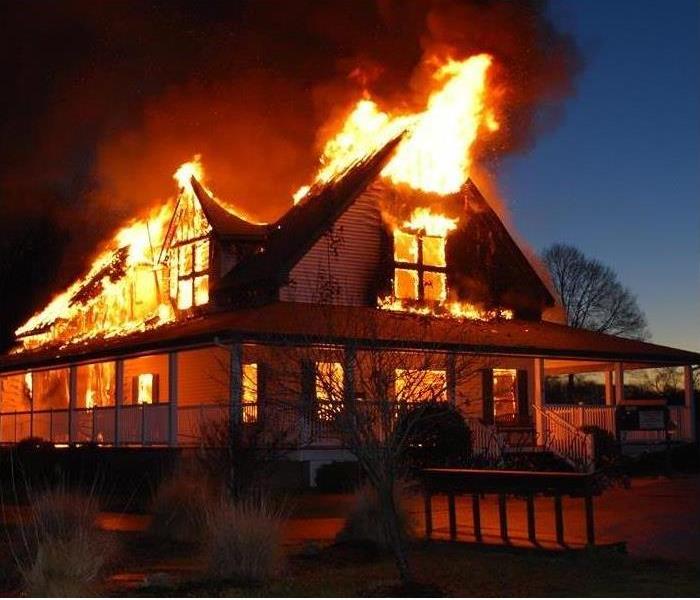 Safety first
Safety first
These tips will assist you in taking proper actions until we arrive at a scene of a fire. Follow these DOs and DON'Ts to help reduce damage and increase the chances of a successful restoration:
DO:
- Limit movement in the home to prevent soot particles from being embedded into carpet and avoid tracking
- Keep hands clean. Soot on hands can further soil upholstery, walls, and woodwork
- If electricity is off, empty freezer and refrigerator completely and prop doors open to help prevent odor
- Wipe soot from metal kitchen and bathroom faucets, trim, and appliances.
- If heat is off during winter, pour RV antifreeze in sinks, toilet bowls, holding tanks, and tubs to avoid freezing pipes and fixtures
- Tape double layers of cheesecloth over air registers to stop particles of soot from getting in or out of the HVAC system
DON'T:
- Don't attempt to wash any walls or painted surfaces without contacting SERVPRO first
- Don't attempt to clean any electrical appliances that may have been close to fire, heat, or water without first consulting an authorized repair service
- Don't turn on ceiling fixtures if the ceiling is wet. Wiring may be wet or damaged and cause electrical shock, and air movement may create secondary damage
Smoke & Soot Damage
2/23/2017 (Permalink)
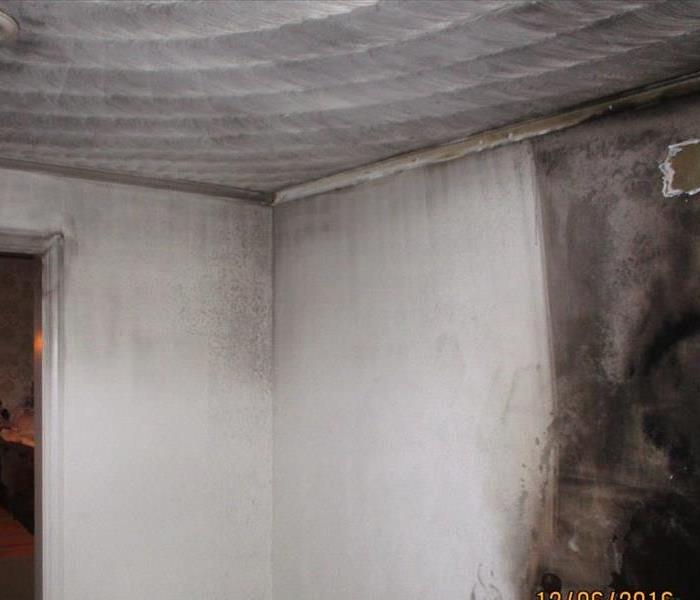 Smoke & soot damage can cause extensive damage to your home, let us help you make it "Like it never even happened!"
Smoke & soot damage can cause extensive damage to your home, let us help you make it "Like it never even happened!"
Smoke and soot is very invasive and can penetrate various cavities within your home, causing hidden damage and odor. Our smoke damage expertise and experience allows us to inspect and accurately assess the extent of the damage to develop a comprehensive plan of action.
Smoke and soot facts:
- Hot smoke migrates to cooler areas and upper levels of a structure.
- Smoke flows around plumbing systems, seeping through the holes used by pipes to go from floor to floor.
- The type of smoke may greatly affect the restoration process.
Different Types of Smoke
There are two different types of smoke–wet and dry. As a result, there are different types of soot residue after a fire. Before restoration begins, SERVPRO of Suffolk/Smithfield/Franklin will test the soot to determine which type of smoke damage occurred. The cleaning procedures will then be based on the information identified during pretesting. Here is some additional information:
Wet Smoke – Plastic and Rubber
- Low heat, smoldering, pungent odor, sticky, smeary. Smoke webs are more difficult to clean.
Dry Smoke – Paper and Wood
- Fast burning, high temperatures, heat rises, therefore, smoke rises.
Protein Fire Residue – Produced by evaporation of material rather than from a fire
- Virtually invisible, discolors paints and varnishes, extreme pungent odor.
Our Fire Damage Restoration Services
Since each smoke and fire damage situation is a little different, each one requires a unique solution tailored for the specific conditions. We have the equipment, expertise, and experience to restore your fire and smoke damage. We will also treat your family with empathy and respect and your property with care.
Have Questions about Fire, Smoke, or Soot Damage?
Call us today - SERVPRO of Suffolk/Smithfield/Franklin 757-934-8404
Fire Recovery Tips
1/23/2017 (Permalink)
It is all too easy to think that it can't happen to you, there is no way you could be the victim of a devastating fire.
The National Fire Prevention Association (NFPA) reports that there were 365,500 home fires in the United States in 2015.
That's an average of over 30,000 fires per month. These fires resulted in over 2,000 deaths, 11,000 injuries and over $7 billion in damage.
If you have suffered the unthinkable, here are some tips to help you put the pieces back together.
Get Medical Treatment - Getting everyone out of the house during a fire or other emergency can be a harrowing experience. During your evacuation, you may suffer injuries.
No matter how minor your injuries may seem, be sure to have them checked. This will help reduce any chances of infection.
Get Emotional Help - This is something that is equally as important as the physical healing you may need. A disaster such as a fire can affect people differently.
Some of the emotions you and your family may experience include fear, shock, disbelief, grief, anger, guilt, anxiety and/or depression.
Remember, children also process traumatic events differently than adults, so be prepared to provide them with additional support if necessary. Your local Red Cross can help find you the help you need.
Rebuilding Your Home - It is extremely important to never enter your home after a disaster until inspectors have determined that it is safe to do so.
Get in touch with your insurance agent to help determine the extent of the damage and get a claim open immediately so you can begin to put the wheels in motion for rebuilding or replacing your home.
Finding Professional Contractors - No matter what repairs are needed for your home, always be sure to use reputable contractors to complete the work. Any contractors you choose should have extensive experience repairing homes after a fire or disaster.
Your local chamber of commerce is a good place to start locating the professionals best suited for your needs.
If you have suffered a fire in you home, the professionals at SERVPRO of Suffolk/Smithfield/Franklin are only a phone call aweay. We will jump into action immediately to help you and your family back on track. 757-934-8404





 24/7 Emergency Service
24/7 Emergency Service
